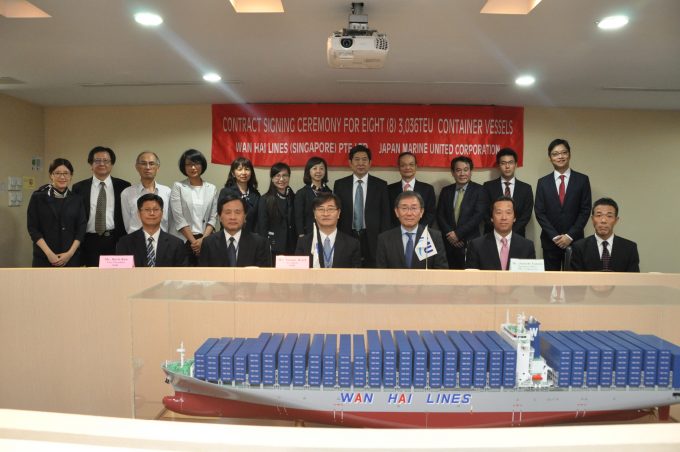Available extra box ship tonnage even harder to find this year
The number of cellular container vessels sold for recycling roughly halved last year, compared with ...

Taiwan niche ocean carrier Wan Hai has confirmed an order for 20 new box ships as part of its fleet renewal plan and market development ambitions.
The profitable container line is continuing its successful strategy of operating smaller containerships on its services.
Eight 3,036 teu vessels will be built by Yokohama-headquartered Japan Marine United Corporation (JMU) and 12 2,038 teu ships at the Chinese yards of Guangzhou Wenchong Shipyard (GWS) and China Shipbuilding Trading Company (CSTC).
Delivery of both types will commence from ...
Trump tariffs see hundreds of cancelled container bookings a day from Asia
'Disastrous' DSV-Schenker merger would 'disrupt European haulage market'
'To ship or not to ship', the question for US importers amid tariff uncertainty
'Chaos after chaos' coming from de minimis changes and more tariffs
List of blanked transpac sailings grows as trade war heats up and demand cools
EC approves DSV takeover of DB Schenker
Forto 'sharpens commercial priorities' as it lays off one-third of staff
Shippers in Asia restart ocean shipment bookings – but not from China
India withdraws access for Bangladesh transhipments, in 'very harmful' decision
'Tariff hell' leaves industries in limbo – 'not a great environment to plan'
IndiGo fleet expansion plan will include a major push to boost cargo volumes
Pre-tariff rush of goods from US to China sees air rates soar, but not for long
De minimis-induced ecommerce demand slump could cripple freighter operators
'Restoring America's maritime dominance' – stop laughing at the back of the class
Hapag 'took the bigger risk' when it signed up to Gemini, says Maersk
Navigating tariffs: 'like trying to solve a Rubik's cube while colour-blind'

Comment on this article